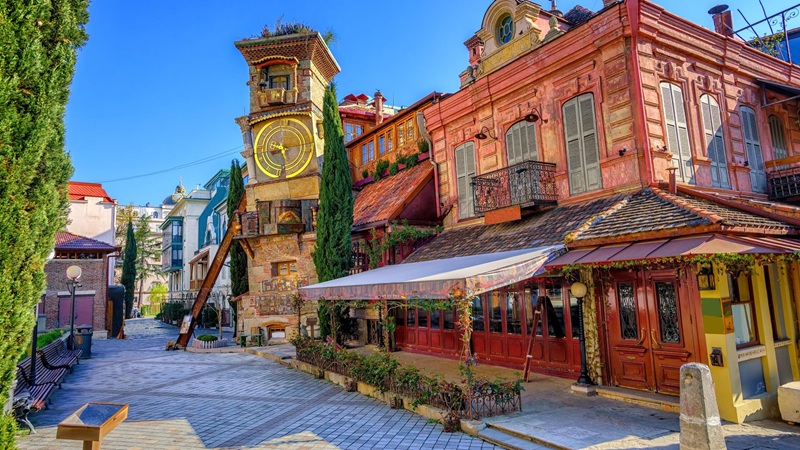 Back
Back
Tbilisi
History and Culture
Tbilisi is the capital of Georgia and one of the oldest cities in the region, founded in the 5th century AD by King Vakhtang Gorgasali. According to legend, the king discovered warm sulfur springs while hunting and decided to build a city there, naming it “Tbilisi” — meaning “warm place” in Georgian.
Over the centuries, Tbilisi has served as a key hub along the Silk Road. It was repeatedly invaded by Persians, Arabs, Mongols, and Turks, yet retained its unique identity and became a multicultural center. The city is a rare example of religious tolerance, where Orthodox churches, synagogues, mosques, Catholic cathedrals, and even a Zoroastrian fire temple coexist.
Modern Tbilisi is a vibrant blend of history and innovation. The architecture spans wooden balconies of the Old Town, neoclassical Soviet buildings, modernist structures, and futuristic glass constructions. Its hills, fortress views, and narrow alleys give it a magical, cinematic charm.
Georgian Cuisine
Tbilisi is the epicenter of Georgian gastronomy. The local cuisine is rich, hearty, and full of flavors. Must-try dishes include:
-
Khinkali – juicy dumplings filled with meat or mushrooms
-
Khachapuri – especially the Adjarian version with egg and cheese
-
Mtsvadi – grilled skewered meat cooked on open fire
-
Lobio – stewed beans with herbs and spices
-
Pkhali – vegetable and walnut pâtés
-
Churchkhela – sweet strings of nuts dipped in thickened grape juice
Wine is a sacred part of Georgian dining. The country boasts an 8,000-year-old winemaking tradition. In Tbilisi, visitors can explore underground wine cellars and modern wine bars offering tasting sessions of traditional qvevri wines.
Top Attractions
Old Tbilisi (Dzveli Tbilisi) — a maze of narrow cobblestone streets, wooden balconies, artisan shops, and quaint cafés. The district is home to the famous sulfur baths, still in use today.
Narikala Fortress — the city’s main stronghold perched on a hill overlooking the Kura River and the Old Town. It offers panoramic views and can be reached by foot or by cable car.
Mother of Georgia (Kartlis Deda) — an iconic statue holding a bowl of wine in one hand and a sword in the other, representing Georgian hospitality and readiness to defend.
Abanotubani (Sulfur Baths) — one of the oldest districts, known for dome-roofed bathhouses built over natural hot springs. The area is a great spot for relaxation and traditional spa rituals.
Freedom Square and Rustaveli Avenue — central parts of the city, lined with government buildings, theaters, museums, hotels, and shopping venues.
Bridge of Peace — a contemporary glass and steel pedestrian bridge connecting the old and new parts of the city, beautifully illuminated at night.
Mtatsminda Park & Funicular — located atop Mtatsminda mountain, it offers sweeping views of Tbilisi, an amusement park, and a hilltop restaurant.
Fabrika — a repurposed Soviet sewing factory turned into a cultural hub with cafés, bars, art studios, and a hostel — a symbol of Tbilisi’s creative new wave.


Subscription title
Subscribe our telegram chanel








